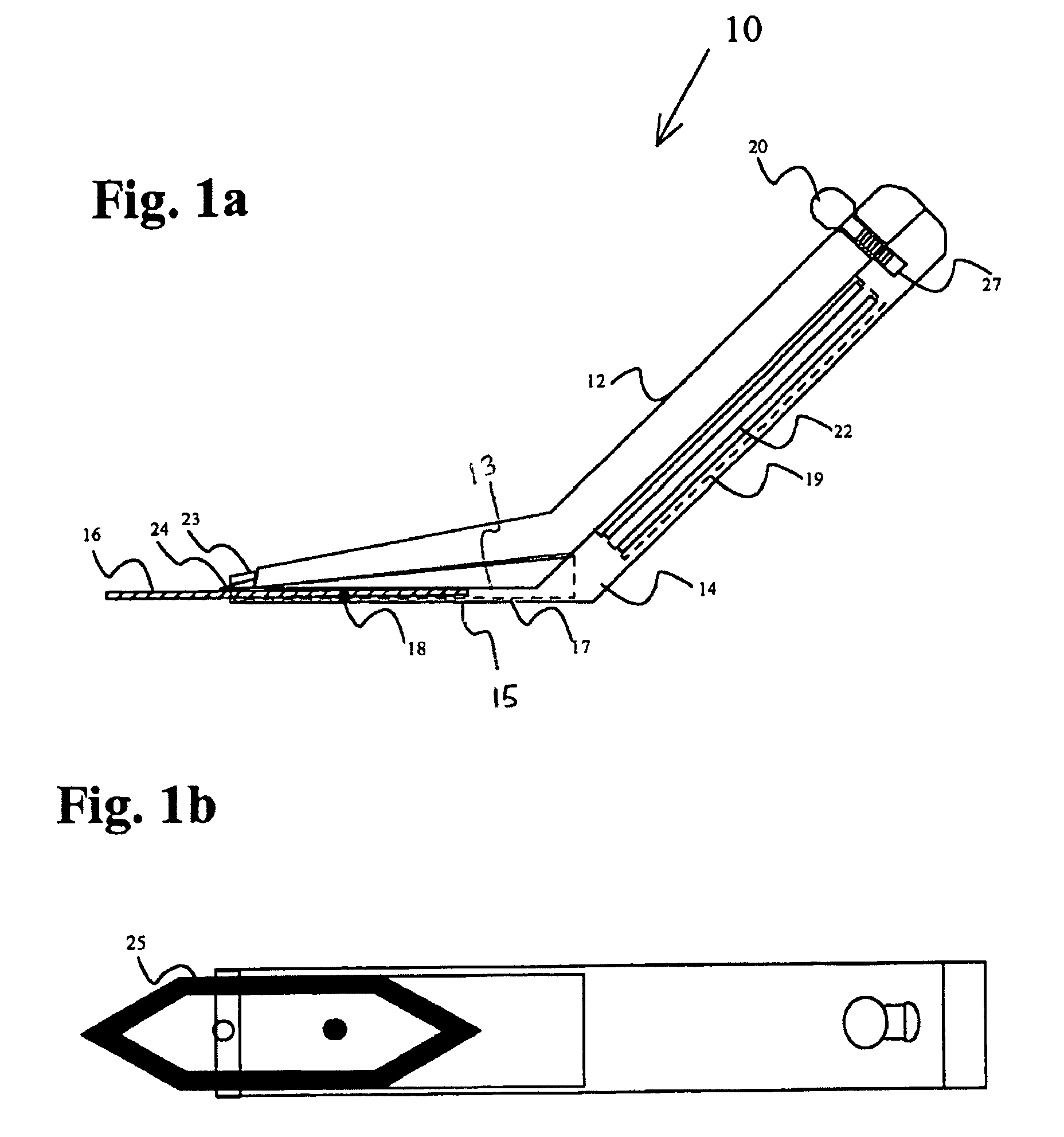Double-edged utility knife
a utility knife and double-edge technology, applied in the field of utility knives, can solve the problems of preventing the easy operation of the knife by the configuration, and achieve the effect of reducing or eliminating the risk of injury and inadvertent blade breakag
- Summary
- Abstract
- Description
- Claims
- Application Information
AI Technical Summary
Benefits of technology
Problems solved by technology
Method used
Image
Examples
Embodiment Construction
[0043]As used herein, the term “double-edged utility knife” means that the utility knife is capable of making perpendicular cuts to surfaces which are in close proximity preventing conventional in-line knifes to be used due to their stubby construction as well as inability of hand which grips the handle to approach the region to be cut with the blade in a vertical position. The double-edged utility knife also has the ability to expose a fresh unused edge by reversing the blade side-to-side or left-to-right or use a new knife blade from the holding compartment. Since the double-edged knife blade is omni dexterous it may be used conveniently for left-handed or right-handed use. The double-edged blades have two holes which mate with a locating pin when the blade is rotated by 180 degrees. In both cases, the double-edged utility knife has a first and a second member which holds the knife using a locating pin attached to the second member and the two members are securely held together us...
PUM
 Login to View More
Login to View More Abstract
Description
Claims
Application Information
 Login to View More
Login to View More - R&D
- Intellectual Property
- Life Sciences
- Materials
- Tech Scout
- Unparalleled Data Quality
- Higher Quality Content
- 60% Fewer Hallucinations
Browse by: Latest US Patents, China's latest patents, Technical Efficacy Thesaurus, Application Domain, Technology Topic, Popular Technical Reports.
© 2025 PatSnap. All rights reserved.Legal|Privacy policy|Modern Slavery Act Transparency Statement|Sitemap|About US| Contact US: help@patsnap.com



